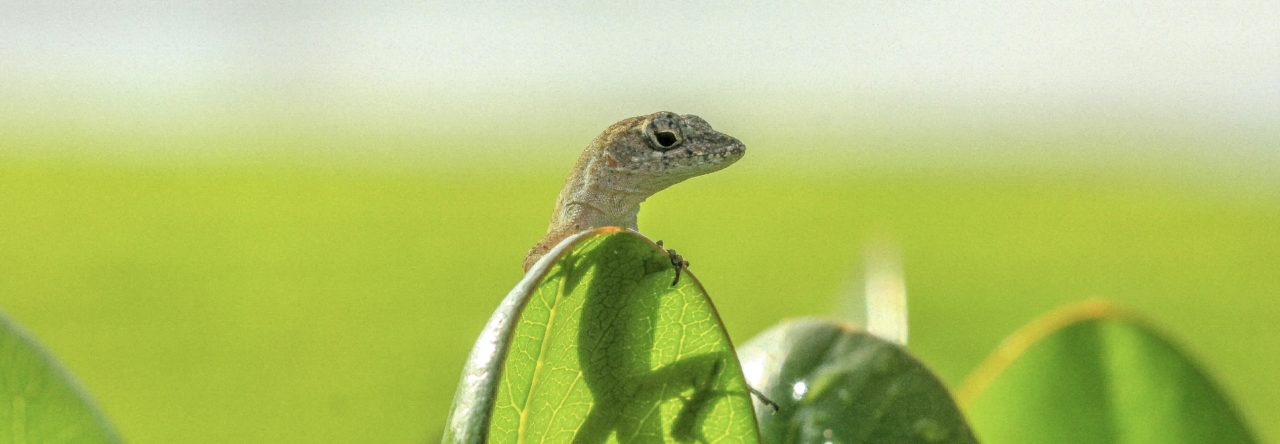
Anolis sagrei in the Bahamas. Photo by Christian Cox from the Washington Post
In these times of rapidly changing climates, a major question is whether species will be able to survive. Essentially, they have two options: either shift their geographic ranges to stay within their ancestral niches, or adapt to new circumstances. Or, of course, go extinct. In recent years, evolutionary biologists have come to realize that evolutionary change can occur very rapidly when selective pressures are strong. The question is whether it can occur rapidly enough to accommodate quickly changing environments.
A recent study suggested that many tropical lizards are imperiled by a warming world. This study suggested that lizard populations would not be able to adapt rapidly to warmer conditions, but the analysis wasn’t very detailed.

First author Mike Logan hard at work at the field site. Photo reprinted from the Washington Post
In a study that is the first of its kind, Mike Logan and colleagues at Dartmouth have investigated the selective forces that may impinge on lizards as the world warms. The study was conducted on the old workhouse, the brown anole, Anolis sagrei. In essence, what the researchers did was calculate the extent to which sprinting capability was affected by temperature in two populations, one in an area in the Bahamas currently occupied by the anoles, and another in a population transplanted to a warmer era that served as a surrogate for conditions that will be experienced under global warming.
The study was gargantuan in its scope. Each lizard was put through its paces a number of times at each of a number of temperatures. From these data, the researchers could establish the temperature at which each lizard ran fastest and the breadth of temperatures at which they ran reasonably fast (compared to their maximum), which is termed performance breadth. They then marked the animals and returned them to their habitats. They then returned three months later to recapture the lizards to see which had survived and which hadn’t, allowing them to see whether their sprint capability measures were acted upon by natural selection.
It turns out that a fair amount of variation exists in the lizards in terms of both optimal temperature and performance breadth. In the natural habitat in Georgetown, Great Exuma, Bahamas, there was no evidence of selection operating on any of their measures.
The transplant experiment was conducted a year later on the Bahamian island of Eleuthera, which is not all that far from Great Exuma. In this case, the thermal characteristics of the habitat from which lizards were taken were very similar to the study site on Abaco. However, the more open, exposed area into which the lizards were transplanted was several degrees warmer, and also more variable in temperature.
Lizards in the transplanted population experienced body temperatures 1.5 C higher than those in the reference population. When the researchers recaptured the lizards on Eleuthera, they found strong evidence for natural selection, and in the direction expected: lizards that performed better at higher temperatures survived better than those with lower performance optima, and those with a broader thermal range survived better than those more narrowly adapted. In other words, there was strong selection for adaptation to warmer conditions.
The big question is whether populations can adapt to such strong selection pressures. The authors didn’t measure the heritability of the traits—that is, the extent to which adults with higher temperature optima produce offspring with similarly high optima, and such heritability is crucial to predicting evolutionary response. Nonetheless, if these traits have levels of heritability equivalent to that of other thermal performance traits in other species, the authors argue, then the brown anole may well be able to adapt evolutionarily to the warming predicted to occur in the next century.
This paper received a lot of attention in the press and blogosphere. For example, nice articles appeared in the Washington Post and on Scientific American‘s website.


























